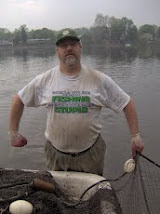A HIDDEN GEM
Dangerous
deadly pandemic notwithstanding, I needed to get out of the house and so I
decided to go on a road trip. Janet is away this week so sitting home alone was
not an option. So, I settled on a distant destination she would not approve of
and took the slowest route possible. With several bottles of water and a vat of
iced-coffee, I drove from our middle-class garret in Collegeville, PA all the
way to White’s Ferry on the Potomac River in Maryland. It’s about 160 miles
just one way, and took me four hours to reach this last remaining working ferry
on the Potomac. Janet would have been so pissed.
LAST OF ITS KIND
At one time
there were 100 ferries servicing traffic between Maryland and Virginia. This
last surviving ferry operates between Montgomery County, Maryland and Loudon
County, Virginia, just north of Leesburg and has been in operation since the
1780’s, or before the United States won its independence from England. It was called Conrad’s Ferry then and Virginia
farmers used it to transport their produce and livestock to the markets of
Washington D.C., about 35 miles southeast. After the Civil War a Confederate
Colonel, Elijah V. White purchased the ferry and named his one ferry boat after
his commanding General, Jubal Anderson Early.
Today White’s
Ferry makes the 300-yard crossing of the Potomac catering mostly to cars. Many
are commuters hoping to avoid thick traffic on the Capital Beltway, or going
north to cross the Potomac at the Point of Rocks Bridge. It’s definitely a
commuter route, because in the nearby town of Poolesville there were traffic
cameras taking pictures of speeders. It costs $5.00 cash to cross with your
car, $8.00 roundtrip. Motorcycles are $3.00. Bicyclists are charged $2.00 and
pedestrians a buck. The ferry is capable of transporting up to 24 cars at a time
and operates from 5 a.m. to 11 p.m. 365 days a year, unless the river’s too
high or filled with too much debris.
This area of
Montgomery County Maryland is idyllic. The approach to White’s Ferry passes
several horse farms and the 185-mile C&O canal goes past the area and the
towpath is a welcoming hike and bike trail that goes all the way to the capital.
There is amble parking for the canal and also White’s Ferry Store & Grill
which serves great food at reasonable prices. There’s an outdoor seating area at
the restaurant as well as a vast open area with more picnic tables for the
general public. There is also a boat ramp alongside the ferry ramp for personal
watercraft. When I visited the area on a blisteringly hot day there was a
family picnicking in the shade of trees while several kids flounced in the
Potomac as the ferry plied the waters back and forth, all of which seemed pastoral
and pleasant and not at all overly dramatic despite recent events, which was
the real reason I went on this ridiculously long car ride.
CHESAPEAKE & OHIO CANAL
 |
| FERRY WITH NEW NAME |
CANCEL
CULTURE v THE LOST CAUSE
White’s Ferry
has been owned by the Brown family since the mid-40’s and they are quite proud
of maintaining this slice of American history, but recently remembrance of that
history had to be altered. When Elijah White purchased the ferry after the
Civil War, he named the boat after his commanding General and from then up
until June of this year the ferry carried the name of his beloved leader and avowed
white supremacist Gen. Jubal A. Early on a banner stretched over the top of the
ferry.
Early was a
successful Confederate officer, but after the Army of Northern Virginia
surrendered to the Union, he fled to Texas hoping to continue the war with
whatever Confederate Army he could muster, with no success. He took pride in
being an “unreconstructed rebel” even after being pardoned by President Andrew
Johnson and was quite vocal in justifying the Confederate cause for secession
from the Union. His attitude and others furthered the idea that the Confederate
cause was heroic and noble, that slavery was just and moral because it led to
economic prosperity and the men of the south were chivalrous and the northern
aggressors were destroying a southern way of living.
It has come to
be known as “the Lost Cause.” In a sense, it is as if history was being written
not by the winners, but the losers..
In June of this
year the name “Gen. Jubal A. Early” was removed at White’s Ferry with a similar
looking banner that reads, “Historic White’s Ferry,” instead.
 |
| REMAINING PEDESTAL |
The Lost Cause
movement also inspired the construction of many Southern memorials. These
statues and edifices also served as reminders of the horrors African Americans
suffered from years of slavery and Jim Crow laws. One such reminder was recently
torn down at White’s Ferry.
In 2017 a
statue of a young Confederate soldier that had stood outside the court house in Rockville, Maryland for decades was defaced with “BLM” graffiti and was subsequently
removed to the private land of White’s Ferry. The statue had been commissioned
by the United Daughters of the Confederacy in 1913 and meant to commemorate Confederate
soldiers from Montgomery County, Maryland, was given to the patriarch of the
White’s Ferry, R. Edwin Brown.
Maryland never seceded
from the Union, although it was a slave holding state until 1864, Soldiers from
Maryland fought for both sides, a fact I had not known previously.
The statue
stood on a pedestal that read: “To our heroes of Montgomery Co., Maryland, That
We Through Life May Not Forget To Love The Thin Gray Line.” The statue was a symbol
of history, and of hatred, of sacrifice, and of slavery, and with the current
growing backlash against such reminders of man’s racist cruelty, it was defaced
again and toppled on June 16. Edwin Brown died this past January and the family
had the statue removed to storage, although the pedestal remains, fenced off
from further damage.
When the statue
arrived in 2017 the Brown family was negotiating with local historians to
create interpretive panels about the history of White’s Ferry and how statues of
the Confederate soldier were sometimes erected with the explicit purpose of to
intimidate and reinforce white supremacist ideas. Now, with just the pedestal
remaining the future of the historic panels is in question.
In the
blistering heat of mid-day, it was easy to see the swirl of history and hatred.
It was good to know the story behind this place and to realize how there can be
underlying even glaring animosity in the symbolism. It is a complicated history.
Here is a good
recent article about The Lost Cause.
COME FOR…
Whether you’re
coming to White’s Ferry to experience a bit of history, or take the ferry like
a mini-amusement ride, or to hike the C&O Canal, or eat a great lunch at
White’s Grill, or flounce a bit in the Potomac, this is a great destination,
even if it’s a long long drive.
 |
| VIEW OF SUGARLOAF MT, MD |
…SUGARLOAF
MOUNTAIN
But,
wait, there’s more!
A
short drive from the ferry is Sugarloaf Mountain, a privately owned scenic park
designated as a National Natural Landmark. Reminding early settlers of the
shape of loaf of sugar rising from the surrounding farmlands, this popular
tourist attraction has great hiking and seasonal horseback and biking trails.
It’s free, but the park is on privately held land and a donation is encouraged.
But,
given the distance I had already traveled, I had no time to explore Sugarloaf
Mountain, but was able to stop by Sugarloaf Mountain Winery. The winery has
several respectable wines and a pastoral setting to sit and enjoy. I dared not
linger over a glass and instead purchased a bottle for home.
ASK
A STUPID QUESTION
Okay,
so far reader right about now you’re asking me how does it take four hours to
drive 160 miles?
I
took back roads and county roads from Collegeville to White’s Ferry. I took
County Route 372 to cross over the mighty Susquehanna River and picked my way along
tertiary roads and finally crossed the Mason Dixon Line in appropriately named
Lineboro, Maryland and finally got on Route 27 for a good way until directions
had me weaving along local roads before I found White’s Ferry…
Yep, Janet would
have been pissed.




































No comments:
Post a Comment